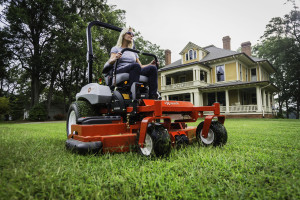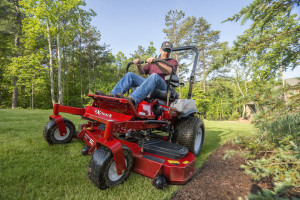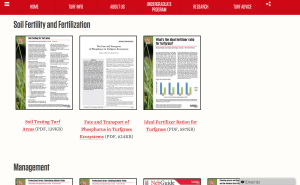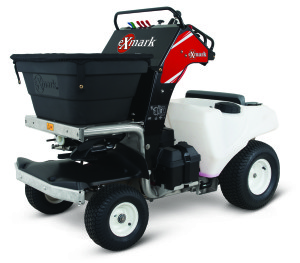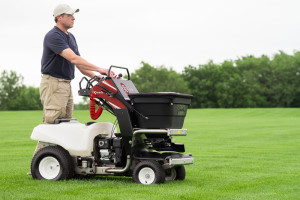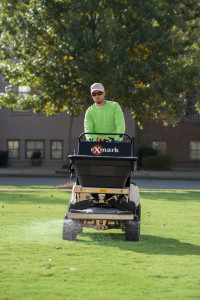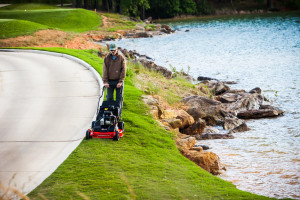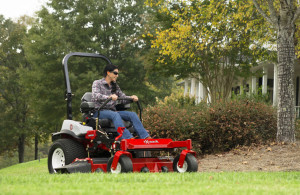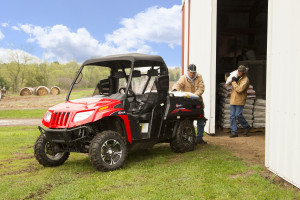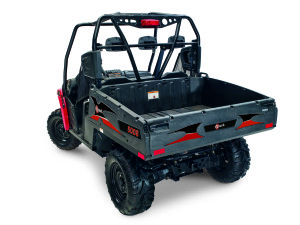All the landscape training and experience in the world won’t matter if you don’t equip your team with the right tools for the job. Lawn grades, landscaping, and other factors you can’t control will always have an impact on your job, which is why you need the equipment necessary to handle each challenge that comes your way. Not only is it safer to match the right mower to the project, but choosing the best equipment can also be more cost-effective overall.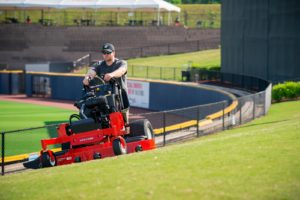
Depending on the type of business you run and the volume of clients you serve, a stand-on mower could be the best investment in your future. Here are the main considerations:
Property Size: The number one factor in determining which type of lawn mower to invest in is the size of the property (or properties) you tend. If you serve lots that are more than an acre in size, a push mower will take hours to get the job done. For lots that are half an acre or smaller, a riding mower will lose its precision. That’s why people who tend variable-sized lots often go for stand-on mowers. They get the job done faster than push mowers but also allow for precision in those hard-to-reach areas.
Property Type: Wide, open spaces are often best served by a riding mower, but when you’re working with tight spaces, small lawns, a lot of landscaping features, like shrubs and irregular plantings, a stand-on mower provides better maneuverability.
Transportation Needs: Traveling with one (or more) riding mowers can be a logistical nightmare, especially if space on your trailer is limited. Stand-on mowers are smaller and easier to transport, making them ideal when you don’t want to spend too much time figuring out how to get from one client’s property to another’s.
Less Turf Damage: Although zero-turn mowers have come a long way in detailed turf care, many pros prefer stand-on mowers for their precision. When a picture perfect finish is your goal, you may want to downgrade the technology for more user control.
Visibility and User Control: If you ask your team, you might find that they have a preference for stand-on mowers because it gives them more control over their work. Not only does a standing position offer better visibility, but the ability to quickly hop on and off can be instrumental when working around a large number of obstructions.
Safety: Although there is always a possibility of falling off of a stand-on mower, many businesses prefer them over riding mowers for safety reasons. This is especially true if you’ll be working with steep or slippery grades that aren’t ideal for riding mowers.
Steep Lawn Grades: Most stand-on mowers have greater hillside stability than their riding mower counterparts. Not only do stand-on mowers have a lower center of gravity, but users can shift their weight in order to counteract a slope’s incline.
Price: Money is a consideration for any lawn care business that wants to stay in the green. Stand-on mowers tend to be 10 to 20 percent less expensive than riding mowers, which can make a big difference to your bottom line—especially if you run a fleet of lawn care specialists.
While stand-on mowers can provide greater flexibility, you should remember that they typically require greater strength in the legs and back, and they tend to be slower than riding mowers. If stand-on mowers fit your business model – mainly small to mid-sized properties, hills, or yards with a lot of features — an Exmark Vantage stand-on mower offers industry-leading options in a variety of deck-sizes.

